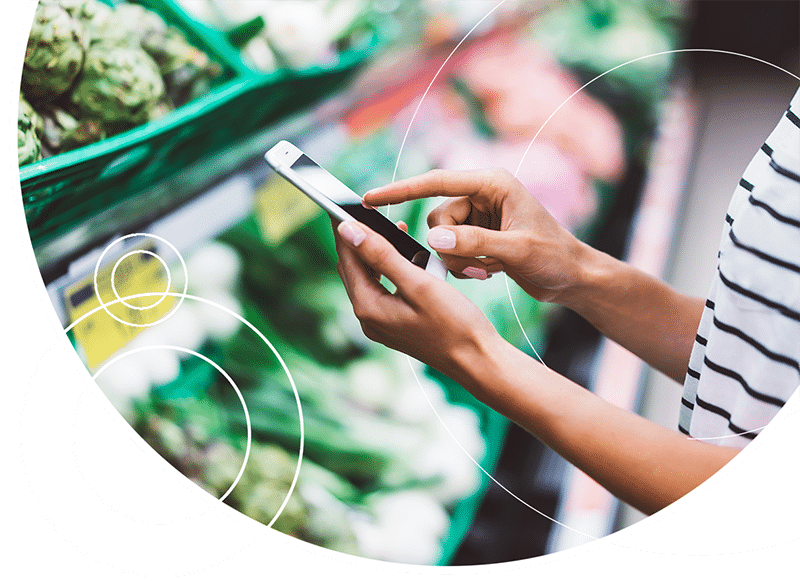Like bellbottoms, baggy shirts, and the pile of bad 1980s fashion choices at the back of my closet, omnichannel seems to be in line to make its rounds as the next blast from the not-so-distant past. But why?
It seems like just yesterday—actually way back in 2017—that omnichannel was all the rage. Those were the days of magazine ads, email campaigns, and trade show events where even people selling printers boasted of omnichannel functionality. It was the style and all the cool kids were doing it—although many were doing it with only one specific interpretation, the one related to order fulfillment in all channels.
But then a new thing arrived: something cooler, something more hip and stylish and edgy. That’s right, Digital Transformation appeared on the scene with its cool terms and big brand logos and suddenly omnichannel was no more. However, in the midst of a global health event—one that has overnight forced people to rethink their business models and how they connect with team members and customers—the term omnichannel is once again making a return. But this time, let’s make sure we are all talking about the same concept.
All rhetoric aside, the concept never truly went away, it was simply understood differently by the various departments and then misrepresented by too many vendors to be embraced. From a marketing perspective, it was continually confused with multichannel, making it a tough “thing” to pin down and embrace on a technological scale. Then Digital Transformation emerged, a concept that offered an easier understanding of the effort ahead, along with a description of what was required to evolve retail operations and prepare it for the new business models available.
Fast forward a few months, and here we are in the spring of 2020, scrambling to ensure the future of retail is protected. And it appears that omnichannel customer engagement is now a critical requirement. But again, what does that mean? If we start with multichannel, the picture becomes clearer. You see, multichannel is simply a unidirectional way of marketing. It can consist of a whole host of things such as ads, emails, text messaging, phone calls, points programs, eCommerce, mobile apps, and of course brick-and-mortar.
All of those things on their own or combined are simply what everyone has been doing for years. And as new technologies arrived on the scene they were adopted as yet another unidirectional channel—pumping out content as a means to get attention just like every other marketing vehicle in the past.
However, omnichannel customer engagement is far different. Instead of being single-siloed channels, it delivers a form of ubiquitous connectivity where all channels act together, continually feeding information to one another, and building ever-evolving profiles on customers based on interactions, needs, wants, desires, habits, and so on.
Now, let’s come back to Digital Transformation. This one is easy to explain. Simply put, it’s the new interconnectivity of once siloed IT systems paired with end-user access. Digital Transformation is actually the enabler of omnichannel engagement and commerce. Think of it this way: with Digital Transformation initiatives in place not only should retail staff have access to all systems including Point of Sale (POS), eCommerce, apps, and so on, but so should customers.
This means the information that the retailer wants to send in real time, in whatever channel, is received by the customer, but also information being fed to the retailer from the customer is captured for profile building purposes. This might mean pairing with customer engagement tools such as Scan-and-Pay to virtually extend the POS to the customer and create a tremendous transaction data loop between the retailer and the customer.
Or perhaps it involves integrating with eCommerce to better capture and aggregate customer data to share it with and in all channels for personalized marketing and engagement purposes such as delivering new and relevant offers through any and all preferred channels that the customer may have. Or perhaps it involves the introduction of a mobile app providing full browsing, shopping, scanning and product interaction capabilities like Scan-and-Learn that, on the one hand, provides tremendous functionality and service to the customer, while on the other providing a wealth of valuable information to inform future retailer-customer interactions. Frankly, this is just a few simple ideas. The options are endless.
And with those possibilities, it’s no wonder that omnichannel customer engagement is now pairing with the concept of Digital Transformation. Hindsight being 20/20, it’s now crystal clear to the retail community that before the ubiquity of omnichannel (in any of its forms or interpretations) can be achieved, the transformation and building of new, modernized systems must be in place.
This doesn’t mean a complete overhaul is required. In fact, it could be tackling tasks as simple as data cleanliness and readiness, and starting with the implementation of a Customer Data Platform (CDP) to prepare for the “new normal” that everyone is talking about. But it does mean some degree of Digital Transformation is required.
To be clear, the basics of customer engagement aren’t changing. Throughout retail history, people have simply wanted a good relationship with their retailer and vice-versa. That’s the basis for earning and building customer loyalty. The difference now is that people have options on how to connect. A retailer’s job is to embrace all these new digital channels to continue building strong, long-term relationships and to deliver omnichannel customer engagement. At the very least, being prepared to engage in all channels just further protects business against whatever the future might hold.
The question now becomes: What’s holding you back?

Andrew Armstrong
Chief Customer Officer
Andrew Armstrong is the Chief Customer Officer at omNovos – working globally with customers to design world-class customer engagement programs. He’s a prolific writer and speaker on topics including customer loyalty, personalization, and retail marketing technologies. Connect with him on LinkedIn or Twitter - his open approach to all topics usually leads to a fun discussion and a few laughs.

